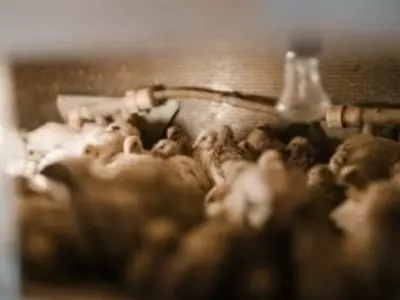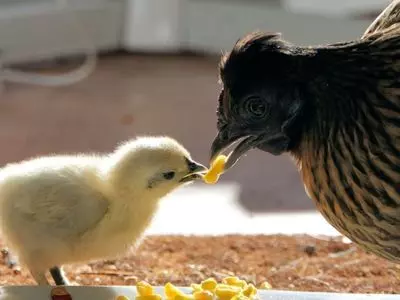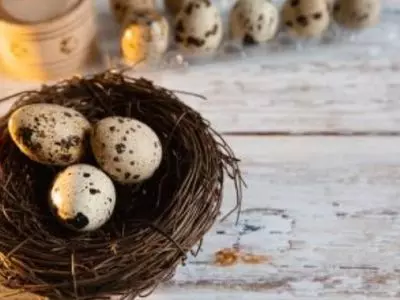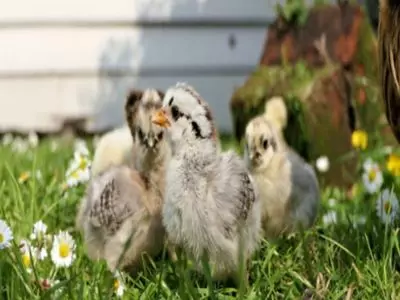No products in the cart.
Quail
How to Care for Quail Chicks – Healthy Bevy TIPS
For the first 5 weeks after they hatch, you only need to provide quail chicks with a warm brooder, soft bedding, plenty of food and water, and isolation from other animals (except for the mother hen if she’s available).
You’ll also need a heat lamp and high-protein quail feed while they’re growing their feathers. When they get older, give them more space with a larger brooder.
We’ll walk you through how to care for quail chicks so that you can grow happy and healthy birds!
*This post may have affiliate links, which means I may receive commissions if you choose to purchase through links I provide (at no extra cost to you). As an Amazon Associate I earn from qualifying purchases. Please read my disclaimer for additional details.
Quail Chick Care

Generally, quails don’t take long to mature and reach full size. They reach maturity and start laying eggs at approximately 7 weeks old.
Quail babies that are raised in captivity in a very humane manner become quite passive.
Learn more about quail chick care by reading on.
1. Assembling a Brooder
The brooder should be clean, sturdy, warm, and safe, free of pests. A cardboard box might be used as a brooder for quail eggs.
A brooder should be kept in a warm, safe, predator-free area. For added protection, place the brooder inside a well-ventilated shed or barn.
Keep the brooder at a constant 100 degrees Fahrenheit and make sure the chicks always have access to a heat bulb.
Reduce the temperature by 5 degrees Fahrenheit per week until it’s at room temperature. Keep an eye on how the chicks are doing as you lower the temperature.
It’s too hot if the chicks are moving away from the heat source. On the other hand, if they huddle in the center of the heat source, the temperature is too low.
Add bedding material like wood shavings to keep quail chicks comfortable. We recommend avoiding newspaper and paper towels, as these aren’t very absorbent.
The frequency of cleanings required for your brooder will depend on the number and age of your chicks.
It’s important to keep your brooder clean, as quail chicks are susceptible to illnesses spread by droppings.
Read More: Chicken Egg vs Quail Egg – Which is Better? We compare chicken and quail eggs by looking at their taste, nutritional content, size, coloring, and more!
2. Feeding
One of the key tasks for caring for quail chicks is feeding them a nutritious diet, using chick starting feed.
Feed your chick’s chick starter for 6-8 weeks to achieve the best possible results. Protein levels in this type of food are often higher than what’s found in other feeds.
We always recommend using feed that is non-GMO or organic, especially if you plan to raise chicks for meat or eggs. This will keep you and your birds healthy.
3. Water
Make sure your hens have access to plenty of clean water.
Change the water daily or as needed to avoid illness. If you notice debris such as food, droppings, urine, dirt, bedding, etc, it’s time to clean and replace the water.
Stones or pebbles in a water bowl make for a shallower container. A water bowl that is too deep could lead to drowning.
4. Keeping Hens and Chicks Together

It would be best to leave a mother hen with the eggs initially to keep them warm and incubate them naturally.
Once they have hatched the hen will look after her young, defend them, and feed them.
If you plan to raise chicks alongside hens or mother quails, you can begin separating them at around 3 weeks if needed.
Read More: What is a Flock of Quail Called? Learn the most common names for groups of quail along with interesting facts!
5. Space
Chicks require additional space as they grow up. You may need to change your brooder or cage as your chicks get older.
They will also need adequate room to roam outdoors to get access to bugs, grass, and sunlight.
6. Bathing
Give your quail chicks a sand bath to enjoy. Chicks will begin bathing in dust shortly, and they’ll love it.
Quails require frequent dust baths to keep parasites like mites and lice at bay.
7. Treats
Feeding your quails a varied diet produces healthy birds that can then be used for meat or eggs.
- Quails can eat salad greens, broccoli, cucumber, and other vegetables.
- Apples, pears, melons, strawberries, and tomatoes are all popular fruits.
- Millipedes, woodlice, mealworms, and little spiders are all great to give to quails.
Here’s a video that shows you the transition from incubator to brooder:
Why Should You Raise Quails?

Meat
Although quails don’t grow as large as chickens, they still produce sweet and flavorful meat.
If you’re looking to be self-sufficient, quail are excellent meat birds.
Eggs
Quail eggs are highly delicious and nutritious! You can eat quail eggs like you would chicken eggs, or even sell them at your local farmer’s market.
Read our related article, When Do Quails Start Laying Eggs? for everything you need to know about when and how often quails lay eggs!
Managing Pests
If you’re dealing with pests ruining your gardens or taking your backyard over, quails are a natural way to keep pests at bay.
They love feasting on all types of bugs, which serves multiple purposes such as being great for their health (and consequently, yours) and keeping pests at a manageable level.
Raising Them is Easy and Relatively Inexpensive
Anyone can raise Quail, even if you just have a fenced-in backyard.
After the initial cost of an incubator for quail eggs, coop, fence, and buying the quail, upkeep really isn’t too expensive.
Feed and veterinary care are your biggest concerns, but generally, birds are super easy to care for and won’t burn a hole in your pocket.
Read our related article, How Long Do Quails Live in Captivity and in the Wild? We explore different US-native quail species and how long they live!
Conclusion
Learning how to care for quail babies is a fun experience for the whole family, and can be a yummy and profitable one, too!
As long as your chicks have a quality feed, fresh water, ample space, and protection from the elements and predators, you’ll have a bustling bevy in no time!

